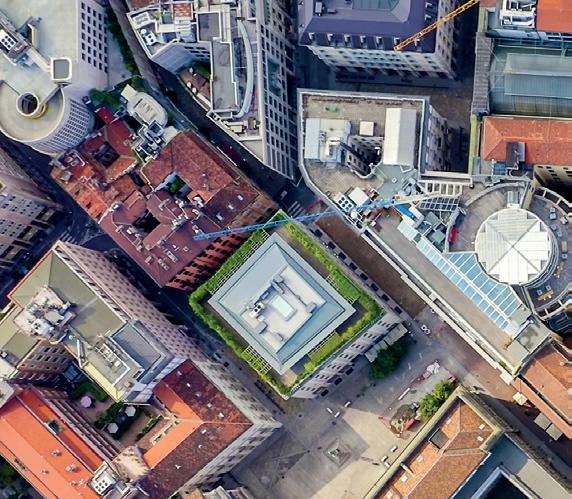
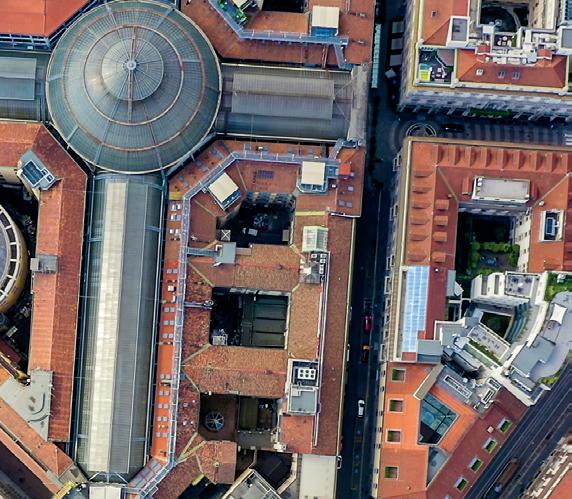






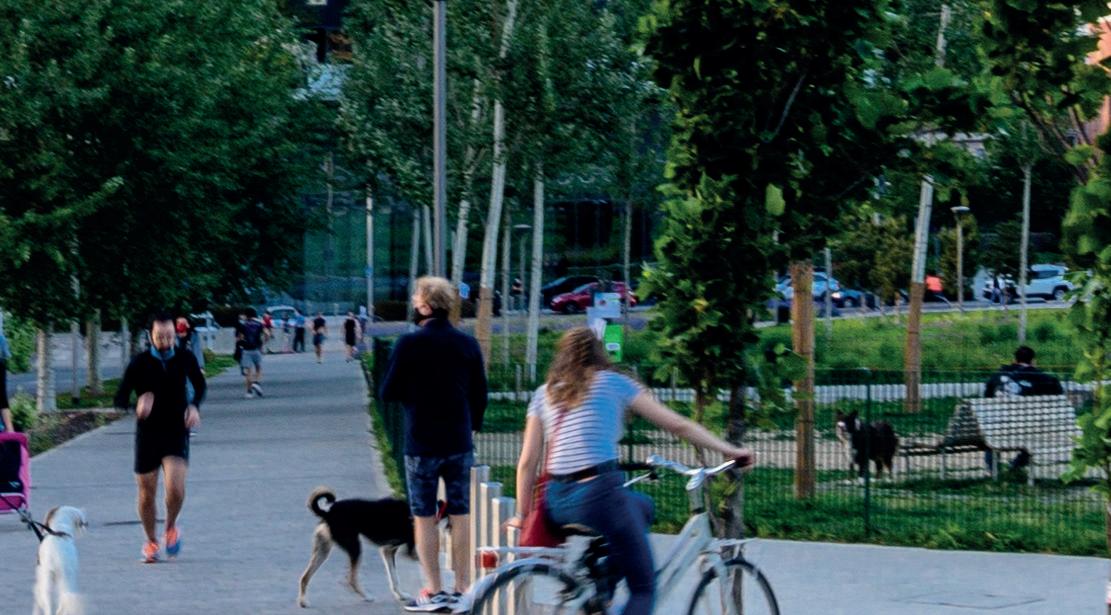























































Milano • Roma H1 2022 Market Report
The Market Report • Milan & Rome H1 2022 edited by Engel & Völkers has been realized with the collaboration and scientific support of Nomisma.
Il mercato residenziale di pregio a Milano


Il punto su Milano
Il mercato residenziale di pregio a Roma


Il punto su Roma




Il mercato di Milano e Roma in
 Indice mercato a Milano Italiana
Indice mercato a Milano Italiana
6 Economia italiana 7 Mercato immobiliare in Italia 17
33
EnglishVersionesintesiingleseversion9 202931
MARKET REPORT • MILANO & ROMA H1 2022 2096 Il mercato residenziale di pregio a Roma Il
residenziale di pregio
Economia
Economia italiana
Compravendite di abitazioni % Q1 2022 Q1 2021)
Scenario economico e prospettive
Il 2021 è stato un anno di forte crescita economica mondiale, con l’Italia nel gruppo di testa. Nel primo semestre 2022 la crescita economica è rallentata, sebbene meno delle attese. Lo scoppio del conflitto tra Russia e Ucraina e l’impennata dell’inflazione causata dall’aumento dei prezzi delle materie prime e dei beni energetici ha certamente causato una frenata dell’economia italiana, ma di portata inferiore rispetto alle aspettative di inizio anno dalla maggior parte degli osservatori economici. Nel complesso, a consuntivo d’anno è attesa una crescita del PIL intorno al 6%, tra le più intense nel panorama europeo. Le previsioni indicano una crescita robusta anche nel 2022 (oltre il 4%) che dovrebbe progressivamente ridursi nel biennio
Lesuccessivo.preoccupazioni
per la seconda parte dell’anno riguardano l’evoluzione degli indicatori economici. L’inflazione al consumo dovrebbe collocarsi intorno al 7,8%, a un livello che non si registrava dagli anni ’80, sebbene l’Italia risulti tra i Paesi con il minor incremento del livello dei prezzi nel panorama europeo. L’impennata dell’inflazione sta determinando una decisa perdita di potere di acquisto delle famiglie (-1,7% il reddito
Prezzo medio immobili Italia H2 2021 2015=100)
disponibile reale previsto nel 2022) e si attendono le misure correttive della Banca Centrale Europea il cui obiettivo a medio termine è il raggiungimento del fisiologico tasso del 2%.
Il clima di fiducia
L’aumento esponenziale dei prezzi energetici, il costo e la carenza delle materie prime, l’inflazione e i ritardi negli approvvigionamenti hanno raffreddato il positivo clima di fiducia che si era consolidato nel 2021. È in particolare l’indice riferito ai consumatori, intriso di una forte componente emotiva, a evidenziare un’evoluzione negativa, raggiungendo, a giugno 2022, il picco minimo da novembre 2020, periodo di piena Conpandemia.riferimento alle imprese, per contro, l’indice di fiducia è aumentato sul finire del primo semestre, registrando il valore più elevato da dicembre 2021. Il miglioramento è esteso a tutti i comparti economici seppure con intensità diverse: i servizi di mercato hanno registrato l’incremento più marcato dell’indice, determinato soprattutto dal settore del trasporto e magazzinaggio.
Fonte: Banca d’Italia e Istat 58 983 122 + 6,6% + 2,8% + 12% 93,5 Popolazione1gen2022 PIL 2021 (var. % annua) PIL 2022 (var. % annua; prev. Istat)
(var.
su
(index:
Fonte: Istat e Nomisma
Fonte: elaborazioni su dati Istat 6 Market Report • Milano & Roma H1 2022
Le compravendite residenziali
Il mercato residenziale italiano nel 2021 ha superato quota 748 mila compravendite, mettendo a segno il risultato più eclatante degli ultimi 15 anni, grazie ad una variazione annua del 34% sul 2020 e del 24% sul 2019, anno pre-pandemia. Il primo trimestre del 2022 conferma la crescita a due cifre, seppure a un tasso di minore entità (+12%).
Nonostante il deterioramento del potere di acquisto delle famiglie causato dall’impennata dell’inflazione e il calo del clima di fiducia dei consumatori, la domanda abitativa si conferma straordinariamente elevata. Secondo l’Indagine annuale di Nomisma sulle famiglie italiane, sono infatti il 4,4% in più – ovvero 3,5 milioni contro 3,3 milioni - le famiglie che, rispetto al 2021, hanno espresso un’intenzione di acquisto di un’abitazione nei prossimi 12 mesi. A fronte dei 3,5 milioni di famiglie potenzialmente interessate, sono circa 884 mila le famiglie già presenti sul mercato dell’acquisto, in crescita del 10% su base annua, con l’80% di queste che dichiara di non potere prescindere dall’accensione di un mutuo.
La variabile finanziamento non è ininfluente. L’aumento dei tassi di interesse, annunciato dalle banche centrali in risposta alla spinta inflativa, determinerà una stretta del mercato del credito e, conseguentemente, una contrazione del numero di compravendite residenziali. Nelle previsioni di Nomisma, se il 2022 supererà comunque il muro delle 700 mila transazioni, con un decremento annuo del 5,6%, l’anno successivo il mercato si ridimensionerà al di sotto delle 620 mila unità.
L’andamento dei prezzi
L’indice medio globale Italia dei prezzi delle abitazioni signorili e civili elaborato da Nomisma mostra una lieve flessione su base semestrale (-0,7%) nel H2 2021, dopo un primo semestre sostanzialmente stazionario. La pressione della domanda ha sostenuto la crescita delle quotazioni. In particolare, le principali città italiane (Top 5) per livello dei prezzi medi delle abitazioni nuove o ristrutturate al nuovo presentano le seguenti variazioni semestrali: nell’ordine, Milano (+3,7%), Firenze (+3,0%), Bologna (+2,9%), Roma (+2,7%) e Venezia (-0,9%), in Conflessione.riferimento
all’outlook, la sostenuta domanda abitativa continuerà ad alimentare i prezzi delle abitazioni per tutto il triennio di previsione, sebbene con un’intensità decrescente nel tempo, in accordo con la flessione delle compravendite residenziali. La media dei prezzi delle 13 grandi città italiane individuerà una crescita del +2% nel 2023 e dell’1,6% nel 2024, con i mercati di Milano, Bologna e Roma a guidare la ripresa.
 Fonte: elaborazioni dati Agenzia delle previsioni Nomisma
Fonte: elaborazioni Nomisma su dati Banca d’Italia e Istat
Fonte: elaborazioni dati Agenzia delle previsioni Nomisma
Fonte: elaborazioni Nomisma su dati Banca d’Italia e Istat
Mercato immobiliare in Italia
su
Entrate;
per 2022-2024
7Market Report • Milano & Roma H1 2022
Il finanziamento immobiliare
L’evoluzione del mercato del credito ha un ruolo centrale per le dinamiche del settore immobiliare residenziale, dal momento che oltre la metà delle transazioni sono sostenute da mutuo ipotecario e, come riporta l’ultima indagine Nomisma nelle famiglie, oltre 75 dei nuclei che manifestano un interesse per l’acquisto di un’abitazione necessiterebbe del canale creditizio per portare a compimento tale proposito. Il 2021 è risultato particolarmente proficuo per il mercato dei mutui immobiliari (+31,9% annuo), con dinamiche di crescita a due cifre in molte aree del Paese, in linea con l’andamento delle compravendite. I tassi di crescita sono elevati non solo rispetto al 2020, ma anche rispetto agli anni precedenti l’inizio della pandemia (+20,6% sul 2018 e +26,6% sul 2019). Il primo trimestre del 2022 ha proseguito la dinamica espansiva, seppure con tassi di crescita decisamente più contenuti rispetto ai trimestri precedenti (+2,9%). Lo scenario previsivo per il prossimo
biennio indica una flessione delle erogazioni per il 2023, seppure con un’intensità decrescente fino all’inversione del trend attesa nel 2024.
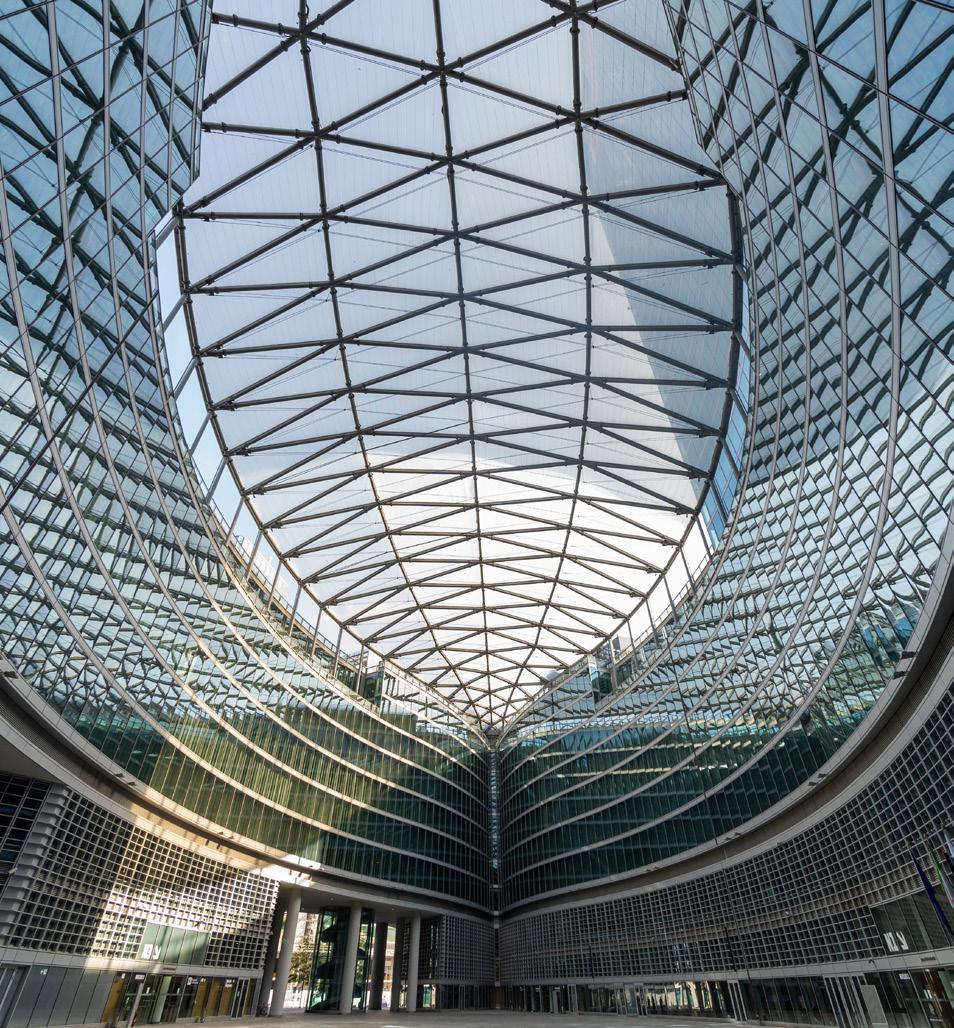 Fonte: Nomisma
Fonte: previsioni Nomisma a luglio 2022
Fonte: elaborazioni su dati Banca d’Italia per dati consuntivi; previsioni Nomisma
Fonte: Nomisma
Fonte: previsioni Nomisma a luglio 2022
Fonte: elaborazioni su dati Banca d’Italia per dati consuntivi; previsioni Nomisma
8 Market Report • Milano & Roma H1 2022
Il mercato residenziale di pregio a Milano
1 371 498 + 36% 6,7K - 11.2K €/m² 250 - 360 € m²/Y 21.000 €/m² Popolazione1gen2021
Compravendite di abitazioni (var. % Q1 2022 su Q1 2021) Nuove/ristrutturate, prezzo prime medio H1 2022
Fonte: canoni)
Congiuntura e outlook
Nel 2021 il volume di compravendite sul mercato residenziale milanese ha raggiunto un consistente incremento del 24,4% rispetto al 2020, recuperando e, anzi, superando il transato 2019 (+2,6%), e mettendo a segno il migliore risultato dal 2000. Seppure molto positivo, il risultato è leggermente inferiore a quello della media delle 13 città monitorate (+28% annuale), dinamica riconducibile al livello già molto elevato delle transazioni nel 2019, in un mercato residenziale, quello milanese, che aveva precocemente anticipato la ripresa rispetto al resto del Paese. Il brillante andamento di mercato è confermato nel Q1 2022, che evidenzia un incremento del 36% delle transazioni su base annua. In tale congiuntura, il segmento prime vede i canoni bene avviati su un percorso di progressivo allineamento ai livelli pre-pandemici e i prezzi ancora in crescita, sebbene con minore intensità rispetto ai semestri precedenti. Il mercato rimane fortemente liquido, con tempi medi di collocamento di circa 1-2 mesi per gli immobili nuovi o pronti all’uso e di circa 3-4 mesi per gli usati. Lo sconto medio sul prezzo richiesto si conferma estremamente contenuto, pari a 3-4 punti
Nuovo/ristrutturato, canone prime medio H1 2022
Nuovo/ristrutturato, centro città prezzo massimo H1 2022
percentuali per le proprietà più interessanti e a 6-8% per gli immobili localizzati in zone non prime o da Milanoristrutturare.èinteressata da un fiorire di nuovi sviluppi di elevata qualità edilizia e architettonica. Tale potenziale e ambizioso metro di paragone sta rendendo la domanda sempre più esigente nel valutare un immobile da acquistare. A questo si aggiunge una sempre maggiore sensibilità per l’efficienza energetica, in modo particolare a seguito dell’impennata dei costi dell’energia che ha caratterizzato l’ultimo semestre e che non sembra in arretramento, almeno nel breve periodo. In tale contesto sono sempre più frequenti gli acquirenti alla ricerca di residenze di classe energetica elevata, sebbene tale caratteristica riguardi quasi esclusivamente lo stock di immobili nuovi.
Le attuali difficoltà legate alla ristrutturazione degli immobili, riconducibili alla scarsità e agli elevati costi delle materie prime e alla poca disponibilità di manodopera, fanno sì che, in questo momento congiunturale, la domanda riponga minore interesse nelle proprietà da ristrutturare, soprattutto se destinate a investimento. Tale dinamica sta contribuendo ad ampliare il gap tra immobili pronti all’uso e immobili
Fonte: Nomisma, Indice di performance residenziale
Fonte: elaborazioni Nomisma su dati Agenzia delle Entrate
Istat, Nomisma (forecast) e Engel & Völkers (prezzi e
9Market Report • Milano & Roma H1 2022
che necessitano di ristrutturazione, sia in termini di prezzi medi sia di tempi di vendita.
Con riferimento alle scelte localizzative, si è attenuata la spinta centrifuga manifestata dalla domanda che, nei due anni della pandemia, aveva preferito al centro le zone semicentrali e periferiche, alla ricerca di zone verdi. Con la caduta delle restrizioni e la normalizzazione delle dinamiche quotidiane, il centro della città è tornato a essere un punto di riferimento per le scelte residenziali delle fasce più giovani e dei single, in particolare, e, di conseguenza, degli investitori.
Il mercato della locazione ha mostrato nel semestre un andamento positivo, con incremento del livello dei canoni e del numero di contratti, riprendendosi progressivamente dalla battuta di arresto provocata dal Covid. In un mercato in cui l’offerta supera ancora la domanda (specie sui tagli fino a 120mq), vengono preferiti gli immobili in ottime condizioni, a scapito di
altri in condizioni non ottimali che in un mercato non saturo faticano a trovare un conduttore.
L’onda lunga della battuta di arresto che ha penalizzato il mercato locativo del periodo della pandemia si riverbera ancora sul mercato in termini di eccesso di offerta di mono e bilocali. La ripresa del turismo e, conseguentemente, degli affitti short term, dovrebbe consentire nei prossimi semestri l’assorbimento di questa tipologia immobiliare. Per contro, è straordinariamente scarsa l’offerta di proprietà in locazione di grande metratura, caratterizzate da elevati standard qualitativi e pronta all’uso.
Outlook H2 2022
L’outlook di Engel & Völkers per il secondo semestre 2022 prospetta, per il mercato della compravendita, una situazione di mercato stazionaria rispetto al primo
Fonte: Engel & Völkers
Fonte: Engel & Völkers
10
Market Report • Milano & Roma H1 2022
semestre, con un’intonazione positiva circa l’aumento dei contratti per la Zona Nord e in particolare nei quartieri Garibaldi – Moscova – Arena e Porta Nuova – XXV Aprile. I prezzi medi sono attesi stazionari in tutte le zone.
Sul versante della locazione, numero di contratti e livello dei canoni sono previsti stazionari per le zone del Centro Storico e la Zona Ovest, mentre la zona Sud e, in parte, la Zona Nord, dovrebbero proseguire nel trend di crescita sia per i contratti stipulati che per le quotazioni medie. Sono più differenziate le prospettive relative alla Zona Est, dove gli indicatori di mercato dovrebbe crescere in Porta Venezia - Repubblica e in Indipendenza – Cinque Giornate - XXII Marzo, a fronte di Città Studi stazionaria.
Centro Storico
Tra tutte le zone del mercato milanese, quella del Centro Storico, più delle altre, mostra una generalizzata intonazione stazionaria delle quotazioni medie degli immobili. Per gli immobili ristrutturati al nuovo, il range dei prezzi medi si conferma straordinariamente ampio a livello di singolo quartiere, con la zona del Duomo, ad esempio, che registra valori medi compresi nel range 8.500-18.500 euro/mq. Le quotazioni top toccano i 2021 mila euro/mq nel Quadrilatero, a Brera e in zona Castello-Foro Buonaparte, e i 17-18 mila euro/mq in San Babila e Cordusio.
La stessa tendenza si riscontra per i canoni delle abitazioni nuove/ristrutturate, assestati su 300-400 euro/mq/anno, mentre scontano una leggera flessione le abitazioni in buone condizioni (170-220 euro/mq/anno).
Fonte: Engel & Völkers 11Market Report • Milano & Roma H1 2022
Zona Ovest
I prezzi medi delle residenze di pregio nella Zona Ovest crescono su base semestrale, confermando il trend al rialzo. Le quotazioni medie per gli immobili ristrutturati al nuovo vanno da 4.200-4.500 euro/mq di Gambara –Bande Nere e San Siro a 9.800 euro/mq di Sempione –Arco della Pace – Chinatown e Vercelli – Washington. Restano fuori range le quotazioni di City Life, tra 8.80015.500

Aumentaeuro/mq.illivello
medio dei canoni per gli immobili nuovi e ristrutturati al nuovo, compresi tra 230-330 euro/ mq/anno. Allo stesso tempo registrano una crescita anche le quotazioni degli immobili in buone condizioni, che si posizionano tra 200 a 300 euro/mq/anno.
Fonte: Engel & Völkers 12 Market Report • Milano & Roma H1 2022
Zona Est
I prezzi medi della Zona Est mostrano una sostanziale stazionarietà su base semestrale in tutte le location monitorate, con eccezione delle zone di Porta Venezia e Indipendenza – Cinque Giornate – XXII Marzo, dove il trend è al rialzo per le abitazioni nuove/ristrutturate al nuovo. Per questi immobili i valori di compravendita sono compresi nel range 4.300-9.150 euro/mq. Crescono i canoni medi di locazione sia per le abitazioni nuove o ristrutturate (230-310 euro/mq/anno), sia per le proprietà in buone condizioni (135-170 euro/mq/anno).
Zona Nord

Le quotazioni medie del semestre mostrano un trend stazionario in tutti i quartieri dell’area per le proprietà nuove e ristrutturate al nuovo. La Zona Nord racchiude aree i cui livelli medi di prezzo distano significativamente, con i prezzi medi delle zone Centrale-Loreto e IsolaGioia-Maggiolina che variano tra 4.600 a 7.000 euro al mq e i prezzi medi top di Porta Nuova-XXV Aprile che
raggiungono quota 19.500 euro al mq. Le quotazioni sono in crescita nell’area di Garibaldi-Moscova-Arena che conferma il trend al rialzo con un prezzo medio massimo assestato su 12.000 euro/mq.
Crescono i canoni medi su base semestrale, compresi nel range 235-425 euro/mq/anno per le abitazioni nuove o ristrutturate e tra 145-200 euro/mq/anno per le abitazioni in buone condizioni.
Fonte: Engel & Völkers
13Market Report • Milano & Roma H1 2022
Zona Sud
I prezzi medi crescono in tutte le zone, in un range che varia, per le abitazioni nuove, tra 6.100 euro/mq di Medaglie d’Oro-Lodi e 10.200 euro/mq di Porta Romana-Crocetta-Quadronno. Lo stesso trend si registra, rispetto al semestre precedente, per le quotazioni delle abitazioni nuove o ristrutturate al nuovo e per quelle da
ristrutturare, senza grande distinzione. Si registrano in crescita anche i canoni di locazione, con incrementi di entità maggiore per gli immobili nuovi o ristrutturati al nuovo, compresi nel range 250-350 euro/ mq/anno. Anche le abitazioni in buone condizioni che non necessitano di lavori di ristrutturazione mostrano un trend al rialzo.
Fonte: Engel & Völkers
14 Market Report • Milano & Roma H1 2022
Fonte: Engel & Völkers
Fonte: Engel & Völkers
15Market Report • Milano & Roma H1 2022

Fonte: Engel & Völkers 16 Market Report • Milano & Roma H1 2022
Intervista
Gabriele Borgnino
Office Manager Engel & Völkers Milano Porta Romana
Petra Mojžíšová
Licence Partner Engel & Völkers Milano
Marco Sorbara
Direttore Commerciale Engel & Völkers Milano
Roberto Magaglio
Licence Partner Engel & Völkers Milano
D. Qual è il trend della domanda nel I semestre 2022. Nuove tendenze e richieste?
R. Borgnino:
La domanda di immobili a Milano nel primo semestre ha continuato la sua ascesa proseguendo sulla strada già tracciata nel secondo semestre 2021. A riprova si fa notare come a Milano nel primo trimestre 2022 il numero di compravendite (oltre 7.500) abbia fatto segnare un +36% rispetto allo stesso trimestre dell’anno precedente. Se, in aggiunta, si contestualizza questo dato al particolare e difficile momento storico, questo non può che risultare ancora più confortante. Si rileva una diminuzione della tendenza centrifuga registrata negli scorsi semestri: la città ha ormai ripreso a pieno regime tutte le attività lavorative, ricreative e sociali. Il centro ha ricominciato dunque a esercitare il fascino e l’attrattiva che da sempre possiede nel determinare la scelta dell’acquisto della casa dei milanesi e che aveva perduto durante il periodo caratterizzato dalla pandemia.
Persiste la domanda di acquisto di abitazioni dotate di sfoghi esterni, come terrazzi o giardini, solo in minima parte soddisfatta dall’offerta. Tuttavia, se nel 2021 la domanda era disposta ad allontanarsi dal centro città, pur di accedere a tali asset, oggi la ritrovata quotidianità frena lo spostamento lontano dal centro. Solo con l’arrivo sul mercato, tra qualche mese, degli sviluppi iniziati post Covid si potrà soddisfare in parte l’esigenza di spazi esterni. L’ultimo semestre è stato
infine caratterizzato dalla richiesta di appartamenti pronti per essere rogitati o con tempi di consegna molto brevi, dal momento che parte della domanda ha cercato di sfruttare i favorevoli tassi di interesse sui mutui, notoriamente previsti al rialzo.
D. Mercato delle locazioni: quali sono le nuove tendenze?
R. Mojžíšová: Il mercato delle locazioni a Milano, normalmente correlato al mercato delle compravendite, dallo stop per il Covid ha seguito un percorso differente. La città nel suo complesso non ha ancora recuperato il numero di abitanti pre-Covid, anche se il ritorno degli studenti universitari fuori sede e la ritrovata mobilità aziendale ha invertito negli ultimi 6 mesi il trend negativo. I canoni prima del Covid erano sostenuti da una forte scarsità di offerta, in particolar modo di prodotti immobiliari di qualità; venendo a mancare la scarsità del prodotto oggi la domanda si concentra esclusivamente sui prodotti di qualità mettendo praticamente fuori mercato tutto quanto non è percepito come qualitativo (ad esempio immobili senza aria condizionata). I canoni di locazione medi sono tendenzialmente in recupero, ma ancora più bassi dei livelli pre-Covid e con tempi di locazione ancora più lenti; questo aspetto, unitamente al rialzo dei prezzi degli immobili, ha contribuito ad abbassare fortemente l’attrattività dell’investimento. Oggi invece il rialzo dei tassi di interesse rischia di spiazzare alcuni investitori. Anche sul mercato delle locazioni la domanda si rivolge verso metrature medie decisamente più grandi rispetto agli anni pre-Covid. Oggi infatti la soluzione più ricercata è il trilocale mentre prima era il bilocale. I plurilocali sono paradossalmente più semplici da affittare rispetto ai bilocali data l‘estrema scarsità di immobili con più di 3 camere da letto. Generalmente possiamo dire che l’offerta dei prodotti in locazione è poco rispondente alle richieste e ai gusti della domanda. È presente una maggiore richiesta da
Il punto su Milano
17Market Report • Milano & Roma H1 2022
parte di cittadini stranieri in generale, probabilmente collegata al rientro dei cervelli, e da parte di cittadini russi e ucraini sfollati. Sarà molto interessante notare se l’aumento delle spese condominiali verrà assorbito dai canoni di locazione, abbassandoli, o se sarà trasferito sui locatari; sicuramente l’aumento delle spese condominiali aumenterà la consapevolezza sul tema sia dei proprietari che dei conduttori. Da ultimo vorremmo segnalare che sempre di più il contratto 4+4 risulta non allineato ai desideri dei proprietari e dei conduttori che decisamente preferiscono scadenze più brevi tra 12 e 24 mesi, con maggior libertà negoziale. Peraltro la durata media di un contratto 4+4 si attesta di fatto attorno ai 2 anni.
D.: Quale è il ruolo dello short nel mercato della locazione milanese?
R. Sorbara:
Le soluzioni short term sono tornate a ricoprire nel semestre un ruolo centrale nel mercato milanese delle locazioni. Dopo due anni di prevedibile flessione, la possibilità di tornare a viaggiare, il forte desiderio di socialità e la riapertura delle attività business e degli
eventi hanno generato, a partire dalla primavera, una nuova ondata di domanda per questa tipologia di immobili, da sempre in grado di rispondere perfettamente alle necessità di questa varietà di visitatori italiani ed esteri. L’effetto di questa ripresa si è manifestato con grande intensità, con una domanda generalmente più nutrita rispetto a un’offerta proporzionalmente scarsa di immobili – molti, difatti, erano stati riversati dal Q2 2020 nel mercato delle locazioni di lunga durata ovvero alienati – generando in questo semestre un diffuso aumento dell’occupancy media e dei rates. Questi miglioramenti non coinvolgono solo gli immobili ubicati nel centro città, ma anche quelli distribuiti in tutta la fascia a ridosso della seconda e della terza circonvallazione che, purché ben collegati con servizi di prima necessità e mezzi pubblici, segnalano sensibili aumenti nei booking e nei valori. Contribuisce a questa crescita anche il generale aumento della qualità degli immobili e dei servizi offerti che sempre più si pongono come valide e spesso preferite alternative al classico hotel, in particolare da famiglie e giovani grazie agli spazi più generosi, alla maggior flessibilità e alla presenza di tutti i servizi in house come cucina

18 Market Report • Milano & Roma H1 2022
e amenity varie. Questo aumento della qualità non è casuale e segue un trend di professionalizzazione di questo segmento che vede operativi player sempre più specializzati con l’ambizione di avvicinare l’offerta milanese a quella delle grandi città europee.
Il semestre è stato dunque positivo per questo settore che risulta molto attuale nelle caratteristiche e attraente per host e guest che ritrovano nella flessibilità di questo modello reciproca soddisfazione.
negativi inizino a impattare sulla parte del mercato immobiliare meno pregiata e significativamente correlata negativamente al rialzo dei tassi di interesse e alla possibilità di accedere facilmente al credito, mentre il mercato immobiliare di pregio, non troppo dipendente dal credito e dal livello dei tassi, continuerà a far segnare prezzi migliori: ipotizziamo quindi per il prossimo futuro una lieve diminuzione dei prezzi minimi, ma un aumento dei prezzi massimi.

Inoltre l’inflazione e il forte aumento delle spese condominiali metteranno in seria difficoltà i proprietari di immobili non più produttivi sostenendo l’offerta di immobili in vendita in nuda proprietà.
R. Magaglio:
Il mercato immobiliare milanese si è dimostrato fin qui molto resiliente alle molte notizie negative arrivate da gennaio 2022 in avanti, proseguendo il suo cammino al rialzo sostenuto da una forte domanda di acquisto.
La guerra in Ucraina, il rincaro dei costi energetici e delle materie prime, l’inflazione, i tassi di interesse in aumento, la crisi di governo e la campagna elettorale ad ora non hanno avuto effetti di qualche rilievo sul mercato milanese di pregio; tuttavia ipotizziamo che da ottobre in avanti questi fattori inizieranno ad avere un impatto crescente specie sulla domanda di immobili meno pregiati polarizzando il mercato in due nicchie sempre più distinte: il mercato di pregio ed il rimanente mercato, due nicchie che si distinguono non tanto e non solo geograficamente sulla mappa cittadina, ma specialmente per la qualità dell’immobile e del “quartiere” o dei servizi offerti dal “quartiere”. In sostanza riteniamo che tutti i fattori congiunturali
Il mercato di pregio milanese rimane in ogni caso fortemente sostenuto dai provvedimenti per il rientro dei cervelli e in parte anche dalla flat tax per i super ricchi, oltre che da una cronica carenza di offerta di prodotti di qualità anche se dal 2023 incominceranno ad arrivare sul mercato le iniziative immobiliari partite post-Covid. Inoltre il Covid, come già più volte notato, ha effettivamente cambiato strutturalmente i gusti della domanda di abitazioni favorendo gli immobili con maggiori spazi interni ed esterni: il processo di sostituzione conseguente è tuttora in atto anche se con minor vigore rispetto ad un anno fa quando esplose. Milano inoltre è sempre di più il centro delle attenzioni degli investitori internazionali e l’appuntamento con le Olimpiadi Milano Cortina 2026 è una calamita irresistibile per ogni tipo di investimento nella città. Da ultimo segnaliamo che con il ritorno dei turisti sono ripresi anche i piccoli investimenti in unità da mettere a reddito a breve termine.
D.: Quali sono le vostre previsioni per la seconda parte del 2022?
19Market Report • Milano & Roma H1 2022
Il mercato residenziale di pregio a Roma
Congiuntura e outlook
A consuntivo 2021 il numero delle compravendite residenziali (38.841) sul mercato di Roma è cresciuto del 31,4% rispetto al 2020 e del 18% rispetto a quello del 2019. Il risultato è in linea, ma migliorativo, con la media delle 13 maggiori città monitorate (+28% e +11% rispettivamente). Il risultato rappresenta il picco massimo dal 2007 e sta sostenendo la ripresa dei prezzi. Il trend in crescita è confermato dal risultato del Q1 2022 (9.226 transazioni) e mostra tuttavia un incremento meno intenso su base annua (+6,4%).Con riferimento al segmento di pregio, nel primo semestre 2022 il mercato romano ha registrato una domanda sostenuta, che ha portato ad una buona performance delle compravendite in molte zone, a fronte di prezzi e tempi medi di vendita nel complesso stazionari rispetto al semestre precedente.
In Centro Storico il mercato residenziale è alimentato sia dalla domanda di prima casa sia da quella di investimento e si concentra principalmente nei rioni di Trastevere e Testaccio, sempre caratterizzati da un mercato vivace, e nei rioni di Ponte, Borgo, Parione e Monteverde Vecchio, particolarmente ricercati dalle giovani coppie o per investimenti ad uso ricettivo/short term. Si consolida la presenza degli acquirenti stranieri, soprattutto francesi e anglosassoni, che tornano ad investire nella Capitale. Alla ricerca di prima casa
Fonte: 761 270 9.000 residenziali (var. % Q1 2022 Q1 Nuove/ristrutturate, prezzo prime medio H1 2022 Nuove/ristrutturate, canone prime medio H1 2022 Nuove/ristrutturate, centro città prezzo massimo H1 2022
sono associate esplicite esigenze di ampie metrature, con spazi esterni e affacci importanti. Tra le nuove dinamiche, si registra la necessità di spazi adatti allo smart working. Nella zona Prati si concentra gran parte dell’attenzione della domanda interessata alle zone centrali, non solo per la prima casa ma anche per le finalità di investimento da parte di acquirenti nazionali. La zona Nord, sempre più apprezzata per la buona accessibilità e la presenza di aree verdi, si è distinta per la robusta crescita delle compravendite in continuità con i due semestri precedenti. La crescente domanda e la contrazione degli immobili offerti sul mercato hanno favorito l’accorciarsi delle tempistiche di vendita e la liquidità del mercato. Tra le zone maggiormente richieste, Trieste-Salario e Nomentano-Bologna, e a seguire Parioli e Pinciano. Si conferma il trend di acquisto per uso investimento nelle zone Nomentano/ Bologna e San Lorenzo, mentre si rileva un calo della domanda estera. La zona Ovest conferma il positivo trend delle compravendite, con prezzi stazionari. La domanda è composta da coppie o famiglie residenti, in cerca di prima casa o di sostituzione di prima casa in zona residenziale. Il taglio più richiesto varia tra 100-150 mq. La zona di Monteverde Nuovo continua a riscuotere l’interesse degli acquirenti, grazie alla favorevole localizzazione e per la presenza di aree verdi, tra cui il parco di Villa Doria Pamphilj. Cresce la domanda in zona Portuense.
Fonte: elaborazioni Nomisma su dati Agenzia delle Entrate
Fonte:
Nomisma, Indice di performance residenziale 2
632 +6,4% 3,4K - 4,8K EUR/m² 140 -
EUR m²/Y
EUR/m² Popolazione1gen2022 Compravendite
su
2021)
Istat, Agenzia delle Entrate e Engel & Völkers 20 Market Report • Milano & Roma H1 2022
La zona Sud sconta in alcune zone un rallentamento delle compravendite, a parità di domanda, che potrebbe rappresentare un segnale anticipatore di una tendenza attesa a livello nazionale. I contratti rimangono tuttavia stazionari in zone più centrali e molto richieste come San Giovanni e Appio Latino, favorite da una buona accessibilità. Le zone EUR e Torrino Nord risultano interessanti non solo per prima casa ma anche per investimento. La domanda di prima casa o di sostituzione si orienta principalmente su immobili da ristrutturare. Il mercato della locazione conferma il dinamismo, in linea con il semestre precedente, a causa della pressione della domanda interessata soprattutto al segmento degli immobili ristrutturati e di moderna concezione. L’offerta residenziale, per contro, ha registrato una contrazione significativa, a causa della destinazione degli immobili ad uso ricettivo, a seguito della ripresa del comparto turistico, penalizzato negli ultimi anni a causa della pandemia. Con riferimento alle diverse zone, si registra una maggiore crescita nel Centro Storico rispetto al 2021, sebbene la zona maggiormente richiesta si confermi la zona Nord, per la presenza diplomatici, accademici e professionisti, seguita dalla zona Sud, preferita da locatari in cerca di immobili con metrature
più ampie e prossime al verde, lontane dall’ambiente caotico del centro.
Outlook H2 2022
Per il secondo semestre 2022 le attese di Engel & Völkers prevedono un andamento nel complesso stazionario delle compravendite, in particolare per i rioni del Centro Storico e Prati-Vaticano. Un’intonazione al rialzo potrebbe caratterizzare la zona Ovest, relativamente alle zone di Monteverde Nuovo e Gianicolense. Nella zona Sud è invece prevista una flessione per le zone Ardeatino/ Montagnola e San Giovanni/Appio Latino. I prezzi medi sono previsti stazionari in tutte le zone. Il mercato della locazione appare più sfaccettato, con crescita dei contratti in alcune zone e stazionarietà in altre. In particolare, si attende un incremento in Centro Storico e nella zona Nord a Trieste/Salario, Talenti/ Monte Sacro, Nomentano/Città Giardino e Balduina. Buone performance dovrebbero riguardare anche le zone di Monteverde Nuovo e Gianicolense, nella zona Ovest, e EUR, Torrino e San Giovanni/Appio Latino nel quadrante Sud. Si prevede che i livelli dei canoni non subiranno variazioni.
21 Fonte: Engel & Völkers Market Report • Milano & Roma H1 2022
Centro Storico e Prati-Vaticano
In Centro Storico i prezzi medi sono compresi all’interno di un range molto ampio che tiene conto della localizzazione dell’immobile, del suo stato di manutenzione e della prossimità ai punti di interesse storico-culturali o istituzionali. Per le abitazioni ristrutturate, le quotazioni vanno da 3.000 euro/mq a 9.000 euro/mq per i quartieri più esclusivi, in linea rispetto al semestre precedente.
Gli sconti medi sul prezzo richiesto sono stazionari su base semestrale, assestati tra 7-9 punti percentuali, a seconda dello stato e delle caratteristiche dell’immobile.
Si accorciano leggermente i tempi medi di collocamento sul mercato, tra 6 a 8 mesi.
Nella zona Prati-Vaticano il range dei prezzi medi varia sensibilmente, tra 4.200 e 7.000 euro per le abitazioni ristrutturate. I tempi medi di vendita si allungano a 6 mesi, con sconti medi sul prezzo richiesto che variano da 4 a 12 punti percentuali.
Sono in crescita i canoni per le residenze ristrutturate, sia in Centro Storico (170-380 euro/mq/anno) sia nella zona Prati-Vaticano (185-220 euro/mq/anno). I tempi medi di locazione sono pari a circa 3-4 mesi in entrambe le zone.
Fonte: Engel & Völkers 22 Market Report • Milano & Roma H1 2022
Roma: Centro Storico e Prati-Vaticano - Livello dei prezzi immobiliari, H1
Fonte:
Engel & Völkers
202223Market Report • Milano & Roma H1 2022
Zona Nord
Le quotazioni medie hanno registrato differenti andamenti nei vari quartieri dell’area, con prezzi medi che variano da 3.000 a 7.000 euro al mq. Le zone Parioli e Trieste/ Salario presentano i prezzi prime medi pari a 7.000 e 6.100 euro/mq per le abitazioni nuove o ristrutturate al nuovo. Si riduce nel semestre lo sconto medio sul prezzo richiesto, che presenta una grande variabilità in base
alla zona (tra 3%-12%). I tempi medi di vendita restano sostanzialmente stabili, compresi tra 2 e 8 mesi. Si amplia il range dei canoni medi, che nel complesso risultano in crescita rispetto al semestre precedente per le abitazioni nuove o ristrutturate (110-300 euro/mq/anno).
I tempi medi di locazione sono contenuti tra 3 e 5 mesi, sebbene in Talenti/Monte Sacro scendano sotto i 2 mesi.
Fonte: Engel Völkers
&
24 Market Report • Milano & Roma H1 2022
 Fonte: Engel & Völkers
Roma
Fonte: Engel & Völkers
Roma
- Livello dei prezzi immobiliari, H1 2022 25Market Report • Milano & Roma H1 2022
Zona Ovest
I prezzi medi registrano su base semestrale una sostanziale stazionarietà in tutti i quartieri della macroarea, con l’eccezione delle abitazioni da ristrutturare nella zona dei Colli Portuensi dove le quotazioni minime sono al rialzo.
I valori di compravendita sono compresi nel range 2.7004.100 euro/mq per le proprietà nuove o ristrutturate al nuovo e nel range 2.300-3.500 per quelle da ristrutturare.

Lo sconto medio è compreso tra 5%-10% in Monteverde e Colli Portuensi e tra 6-12% in Aurelio. I tempi medi di vendita si allungano leggermente, assestandosi su 5 mesi (7 mesi in zona Aurelio).
Si amplia il range dei canoni medi di locazione per le abitazioni nuove o ristrutturate (110-190 euro/mq/anno).
I tempi medi di locazione si accorciano nella zona di Monteverde Nuovo (circa 2 mesi).
Fonte: Engel & Völkers
26 Market Report • Milano & Roma H1 2022
Zona Sud
I prezzi medi delle abitazioni nuove/ristrutturate al nuovo si confermano nel complesso stabili rispetto al semestre precedente, con l’eccezione dell’EUR e del Laurentino dove si registra un incremento dei prezzi medi massimi. Le quotazioni medie vanno da 2.300 euro/mq della zona Laurentino a 4.800 euro/mq a San Giovanni /Appio Latino e dell’EUR per gli immobili nuovi o ristrutturati al nuovo. Lo sconto medio sul prezzo richiesto si conferma compreso tra 3%-15%. I tempi medi di vendita restano assestati intorno a 7 mesi, ma nella zona San Giovanni/ Appio Latino e Ardeatino/Montagnola scendono a 4-5 Inmesi.calo
il livello medio dei canoni massimi, con i valori degli immobili nuovi o ristrutturati compresi tra 115-260 euro/mq/anno. I tempi medi di collocamento sul mercato della locazione sono rapidi, compresi in un range di 2-3 mesi.

Fonte: Engel & Völkers 27Market Report • Milano & Roma H1 2022

 Fonte: Engel & Völkers
Fonte: Engel & Völkers
28 Market Report • Milano & Roma H1 2022
Intervista
Helio Cordeiro Teixeira Managing Director M.C. Roma Engel & Völkers
D. D. Qual è il trend della domanda di acquisto e locazione nel II semestre 2022?
Il mercato immobiliare a Roma, in particolare quello residenziale, ha dato dimostrazione di grande di vitalità nei primi sei mesi del 2022, dando seguito alla tendenza di crescita che si verifica dal 2019.
Dopo oltre 2 anni di convivenza con un’emergenza sanitaria senza sosta e nonostante il complesso scenario mondiale attuale, la percezione è di una tendenza espansiva del mercato immobiliare nell’area delle compravendite e locazioni, caratterizzato da momenti di attesa in funzione di ogni evento negativo e di rapide riprese di crescita successive. I nostri dati evidenziano al 30 giugno 2022 un + 16% del volume transato rispetto al primo semestre 2021, numeri che confermano questo trend anche in un periodo pieno di cambiamenti e di incertezze a livello globale.
La domanda ha segnato livelli di crescita costanti e sostenuti in questi mesi, l’interesse nel comparto residenziale non ha dato segnali di cedimento, in particolare per la sostituzione della prima casa, che resta la priorità per la grande parte dei clienti. Non sono inoltre mancati piccoli e medi investimenti immobiliari nelle aree centrali, merito del graduale ritorno alla normalità e dei venti di ripresa del settore turistico in città, con prospettive allettanti di un totale ritorno alla normalità. Se la domanda è stata vigorosa lo stesso non si può affermare per quanto riguarda l’offerta che ha subito maggiormente le conseguenze di un quadro complessivo incerto come quello in cui viviamo. Il perdurare del conflitto in Ucraina, la crisi politicogovernativa e il rischio di un autunno con una crescita inflazionistica contribuiscono alla difficoltà di lettura del futuro da parte dei proprietari e all’incertezza nel fare scelte importanti, rallentando le decisioni di vendita
e contribuendo di conseguenza alla scarsità di nuovi prodotti sul mercato, in attesa indicazioni più chiare. La spinta della domanda e la debolezza dell’offerta, in un quadro complesso a livello locale e mondiale, hanno avuto inevitabilmente un impatto sui prezzi. Forse non possiamo affermare di un reale riscontro di aumenti dei prezzi generalizzato e in tutte le zone, ma senz’altro di una ridotta forbice tra prezzi di richiesta e di chiusura (riducendo i margini di trattabilità) per gli immobili di qualità, posizionati in aree ben servite e dotati dei requisiti ormai fondamentali quali: stato complessivo, agile mobilità, spazi esterni e dotati di soluzioni di efficientamento energetico. Un altro importante dato emerso nel I semestre 2022 riguarda i tempi di vendita ormai stabilizzati mediamente tra 5 e 6 mesi, che si riducono notevolmente per gli immobili posizionati sul mercato al giusto prezzo di vendita e caratterizzati dai requisiti principali.
Il quadro del comparto delle locazioni segue a grandi linee la stessa tendenza di espansione della domanda verificatasi nel comparto delle vendite nel primo semestre 2022. Anche qui riscontriamo un’offerta che fa fatica a rispondere quantitativamente e qualitativamente alle esigenze dell’utenza. Le aree centrali e semicentrali ben servite da trasporti e servizi di prima necessità, gli spazi esterni, le dotazioni tecniche e lo stato complessivo dell’immobile sono requisiti fondamentali per un’utenza attenta, con esigenze di flessibilità e spesso in continua mobilità. Il comparto delle locazioni ha sicuramente beneficiato del rallentamento della pressione sanitaria, del ritorno crescente degli spostamenti per motivi di lavoro, della graduale ripresa del settore turistico e, in molti casi, delle difficoltà di molti clienti di fare il passo verso l’acquisto della prima casa.
D. Rispetto alle diverse zone di Roma, si rilevano nuove tendenze?
Nella città di Roma, in contrapposizione ai tanti elementi attrattivi che la contraddistinguono, non si sono completati i vari piani di investimento e di riqualificazione necessari
Il punto su Roma
29Market Report • Milano & Roma H1 2022
a cambiare la fisionomia della città e, di conseguenza, la mappa abitativa che resta ancora legata agli storici quartieri e molto poco a nuove zone emergenti. I progetti capitolini rasentano ancora burocrazia, attuazione lenta e problemi non risolti dalle varie amministrazioni che si sono susseguite negli ultimi anni. Questa situazione, se da una parte rappresenta un problema all’evoluzione e modernizzazione della città, dall’altra nasconde una grande opportunità per il futuro, in attesa che molte aree possano rivelarsi buoni investimenti. Il completamento dei piani di mobilità, di nuove infrastrutture, di miglioramento della qualità dei servizi e del decoro urbano sono gli aspetti che potrebbero cambiare radicalmente la mappa abitativa attuale, rendendola più omogenea e più appetibile lungo le varie zone della città. Il recupero di edifici con grande valore storico e architettonico nelle zone centrali e la riqualificazione di grandi aree inutilizzate nelle zone semicentrali e periferiche potrebbero offrire opportunità abitative, con prezzi più appetibili, dando maggior scelta ai potenziali nuovi acquirenti non in grado di sostenere i costi di acquisto della prima casa nei quartieri consolidati - come ad esempio single, giovani coppie e piccole Restanofamiglie.indiscusse le caratteristiche che rendono unica la Capitale, come la bellezza della città, il patrimonio storico e artistico, la presenza di molte aree verdi, la visibilità internazionale, gli eventi, il clima favorevole e
la vicinanza al mare, che rendono sempre alto l’interesse da parte di un pubblico italiano ed estero, in particolare verso i quartieri storici, centrali e semicentrali. L’esigenza di più spazi, interni e esterni, la presenza di aree verdi e di servizi essenziali e la possibilità di spostarsi in modo agevole si collocano come elementi determinanti nella scelta della propria abitazione. In questo contesto si conferma ancora, sia per l’acquisto che per la locazione, l’interesse dei clienti di fascia alta o in trasferta verso le aree di pregio come Centro Storico, Parioli, Prati e dei clienti del ceto medio o famiglie verso quartieri residenziali consolidati come San Giovanni, Monte Sacro-Talenti, Balduina, Monte Verde, Gianicolense, Ostiense, Eur, Palocco, ecc.

D. Quali sono le vostre previsioni per la seconda parte del 2022?
La vitalità complessiva del settore residenziale, nonostante le tante variabili attuali nello scenario nazionale e internazionale, ci fanno sperare in un secondo semestre ancora in espansione. La qualità e la quantità della domanda, la volontà crescente di miglioramento della propria condizione abitativa, il timore di un aumento improvviso dei prezzi degli immobili e dei tassi rafforzano l’interesse e la necessità verso il cambio di abitazione. D’altra parte la carenza di nuovi prodotti in grado di soddisfare la domanda crescente potrebbe creare qualche rallentamento ed è un aspetto con il quale il settore deve fare i conti e farsi trovare pronto.
Non vanno dimenticati, inoltre, i tanti fattori che potrebbero impattare negativamente sul settore immobiliare, e non solo, come l’inasprimento della guerra in Ucraina, l’innalzamento non controllato dell’inflazione, dei tassi di interessi, delle difficoltà di accesso al mutuo, della crisi energetica e un rallentamento dell’economia italiana e globale.
Sono temi che Engel & Völkers affronta con azioni correttive tempestive e con una chiara strategia a medio e lungo termine, che prevede il continuo rafforzamento del valore dell’internazionalità del brand, della qualità dei servizi sempre più elevata, della capacità di investimenti in marketing tecnologia e digitalizzazione, del crossselling nazionale e internazionale e di un importante piano di espansione del modello Market Center in Italia e nel mondo, in parallelo a quanto accade da sempre nella rete franchising.
30 Market Report • Milano & Roma H1 2022
Il mercato di Milano e Roma in sintesi
Malgrado le criticità economiche che caratterizzano l’attuale congiuntura, il mercato di pregio nelle due principali città italiane presenta una congiuntura favorevole, con il comparto della locazione sul percorso di riallineamento degli indicatori pre-pandemia e quello della compravendita ancora in crescita, sebbene con minore intensità rispetto ai due semestri passati. Sul mercato di Milano, il pressing della domanda di pregio contribuisce alla conferma di tempi di assorbimento molto rapidi e sconti del tutto esigui. Si affievolisce la spinta emotiva verso le zone esterne al centro storico, che torna protagonista delle scelte localizzative e degli investimenti. L’intensità degli sviluppi urbani sposta l’asticella dei desiderata verso l’alto, costituendo per la domanda un benchmark difficile da ritrovare in una vasta offerta non sempre adeguata. Tale dinamica porta gli immobili di pregio nuovi o pronti all’uso a quotazioni di acquisto o locazione spesso fuori mercato. I prezzi medi sono stazionari in centro storico e nel quadrante Nord, mentre le altre zone beneficiano di un incremento dei valori.
A Roma i contratti di compravendita e locazione crescono in particolare nelle zone di pregio e in zone appetibili in termini di rapporto qualità-prezzo e ben collegate con il centro. Si rileva tuttavia in altre aree della Capitale un’intonazione al ribasso delle transazioni, segnale, forse anticipatore, in linea con le previsioni di flessione degli scambi attese dagli operatori per il

mercato nazionale. È del tutto ristabilito l’interesse per il Centro Storico, anche con riferimento alla domanda estera. Prezzi e canoni sono nel complesso stazionari, con tempi di collocamento più liquidi rispetto al recente
L’outlookpassato. per il secondo semestre 2022 evidenzia, per entrambe le città, performance di mercato di segno non univoco, differenziate all’interno delle diverse zone.
A Milano, si prospetta una situazione nel complesso stazionaria del mercato della compravendita, con previsioni di aumento dei contratti in alcuni quartieri della Zona Nord. I prezzi medi sono attesi invariati in tutte le zone. Sul versante della locazione, numero di contratti e canoni sono previsti stazionari in Centro Storico e nella Zona Ovest, mentre nelle zone Sud e, in parte, Nord, dovrebbe proseguire il trend di crescita. Più sfaccettate le prospettive della Zona Est, dove contratti e canoni dovrebbe crescere in alcuni quartieri.
A Roma il mercato della locazione sembra crescere a macchia di leopardo, con alcuni quartieri interessati da incremento dei contratti, pur con canoni invariati, e altre zone che dovrebbero presentare un’intonazione stazionaria. Compravendite e prezzi resterebbero stabili in Centro Storico, Prati-Vaticano e nella Zona Nord, mentre nei quadranti Ovest e Sud la situazione di mercato darà luogo ad aumento e calo dei contratti, rispettivamente, in alcune zone.
31Market Report • Milano & Roma H1 2022









34 Italian economy 35 Italian Real Estate market 45 Prime housing market in FocusMilanon Milan Prime housing market in FocusRomeon Rome Milan & marketsRomeataglance37 485759 Index MARKET REPORT • MILAN & ROME H1 2022 374834 Prime housinginmarketRome Prime housing inmarketMilanItalian economy
Italian Economy
Economic Scenario and Outlook
2021 recorded a robust economic growth worldwide, with Italy in the forefront. In 2022 H1, however, the economic growth slowed down, albeit less than Indeed,expected.the outbreak of Russia-Ukraine conflict and the spike in inflation caused by the increase in raw materials’ and energy prices definitely played their part in the deceleration of the Italian economy, but the impact was smaller than the one envisaged by most economic observers for the first part of the year. Overall, at the end of 2021, the GDP is expected to grow by 6%, one of the most intense rates in the European economy. The estimates show a robust growth also throughout 2022 (higher than 4%), which should progressively shrink in the forthcoming two years.
The main concerns for the second half of the year are related to the evolution of the economic indicators.
Consumer price inflation should stop at 7.8%, a level that was lastly recorded in the 80s, even though Italy is one of the Countries with the smallest prices increase in the European market.
The spike in inflation is currently determining a
significant loss of households’ purchasing power (-1.7% of real disposable income expected in 2022) and for that, the Member States are awaiting ECB’s corrective measures for reaching the more physiological rate of 2% in the medium-term.
The Climate of Confidence
The exponential increase in energy prices, the cost and the shortage of raw materials, the inflation and the delays in supplies stiffened the positive climate of confidence that had been consolidated over 2021. More specifically, it is the consumers index -saturated with a strong emotional element- that highlights a negative evolution, which reached, as of June 2022, the bottom value as of 20 November 2020, right in the middle of the Nevertheless,pandemic.
as far as companies are concerned, the confidence index increased by the end of H1, recording the highest value ever since December 2021. This improvement can be recorded in all economic sectors, albeit with different intensities: market services recorded the highest increase in the index, mostly as a result of the transport and storage sectors’ performances.
Source: Bank of Italy and National Institute of Statistics (Istat)
Source: Nomisma elaborations on Istat (Italian National Institute of Statistics) data 34 58 983 122 + 6,6% + 2,8% + 12% 93,5 Population1Jan2022 GDP 2021 (annual change) GDP Growth 2022 (annual change; Istat forecasts) Home sales (Q1 2022 on Q1 2021) Housing av. price Italy H2 2021 (index number: 2011=100) Source: Istat (Italian National Institute of Statistics) and Nomisma
Market Report • Milano & Roma H1 2022
Residential Sales
In 2021, the Italian residential market reached 748,000 sales, recording the most striking result of the last 15 years, thanks to an annual change of 34% on 2020 and of 24% on 2019, the last pre-pandemic year. 2022 Q1 confirmed the double-digit growth, albeit at a slightly smaller rate (+12%).
Despite the loss in households’ purchasing power caused by the spike in inflation and of the drop in consumers’ confidence, the housing demand proved to be extremely high. According to Nomisma’s annual survey on Italian households, if compared to 2021, +4.4% households (i.e., 3.5 million instead of 3.3 million) expressed their intention to purchase a housing unit in the next 12 months. Beyond these 3.5 million households potentially interested in purchasing a property, about 884,000 families are already present in the purchase market, recording a 10% growth on an annual basis, despite 80% of them declared to be forced to resort to taking out a
Indeed,loan.
the financing variable is not irrelevant. The increase in interest rates announced by the central banks as a way to curb the inflationary boost shall bring about a credit market’s crunch and, as a consequence, a reduction in residential sales. According to Nomisma’s previsions, if 2022 will manage to record more than 700,000 sales (thus recording a 5.6% annual decrease), the market shall not achieve more than 640,000 sales in the following year.
Price Trends
The average Italian housing price global index for prime and regular houses elaborated by Nomisma shows a slight drop on a half-yearly basis (-0.7%) in 2021 H2, following a substantially stable H1. Indeed, the demand’s pressure supported the prices growth. More specifically, among the top 5 Italian cities for average prices of new or renovated properties, the half-yearly change is as follow: Milan (+3.7%), Florence (+2.9%), Bologna (+2.9%), Rome (+2.7%) and Venice (-0.9%), declining.
With regard to the incoming months, the continuing housing demand shall continue to feed the properties’ prices for the whole duration of the three-year forecast, albeit with a decreasing intensity over time, in accordance with the drop in residential sales. The average prices in Italy’s 13 big cities shall record a +2% growth in 2023 and a +1.6% one in 2024, with Milan, Bologna and Rome’s markets leading the recovery.
Real Estate Financing
The evolution of the credit market plays a pivotal role in the trends of the residential sector, given that more than half of the residential purchases is loan-backed and, as reported by Nomisma’s latest survey on households, more than 75% of the households interested in purchasing a property would need to access a credit line in order to fulfil their wish.
Source:
Source:
Italian Real Estate Market
Italian Revenue Agency final data; Nomisma forecasts
Nomisma 35Market Report • Milano & Roma H1 2022
2021 proved to be particularly fruitful for the real estate loans market (+39.1% on an annual basis), with doubledigit growth trends in many areas of Italy, in line with the sales trends. Growth rates increased greatly not only if compared to 2020, but also if compared to prepandemic years (+20.6% on 2018 and +26.6% on 2019).
2022 Q1 continued on this expansionary trend, albeit with markedly more contained growth trends than the previous quarters (+2.9%). The forecast for the next twoyear period shows a drop in loan disbursements for 2023, albeit with a decreasing intensity that should lead to the inversion of the trend expected for 2025.
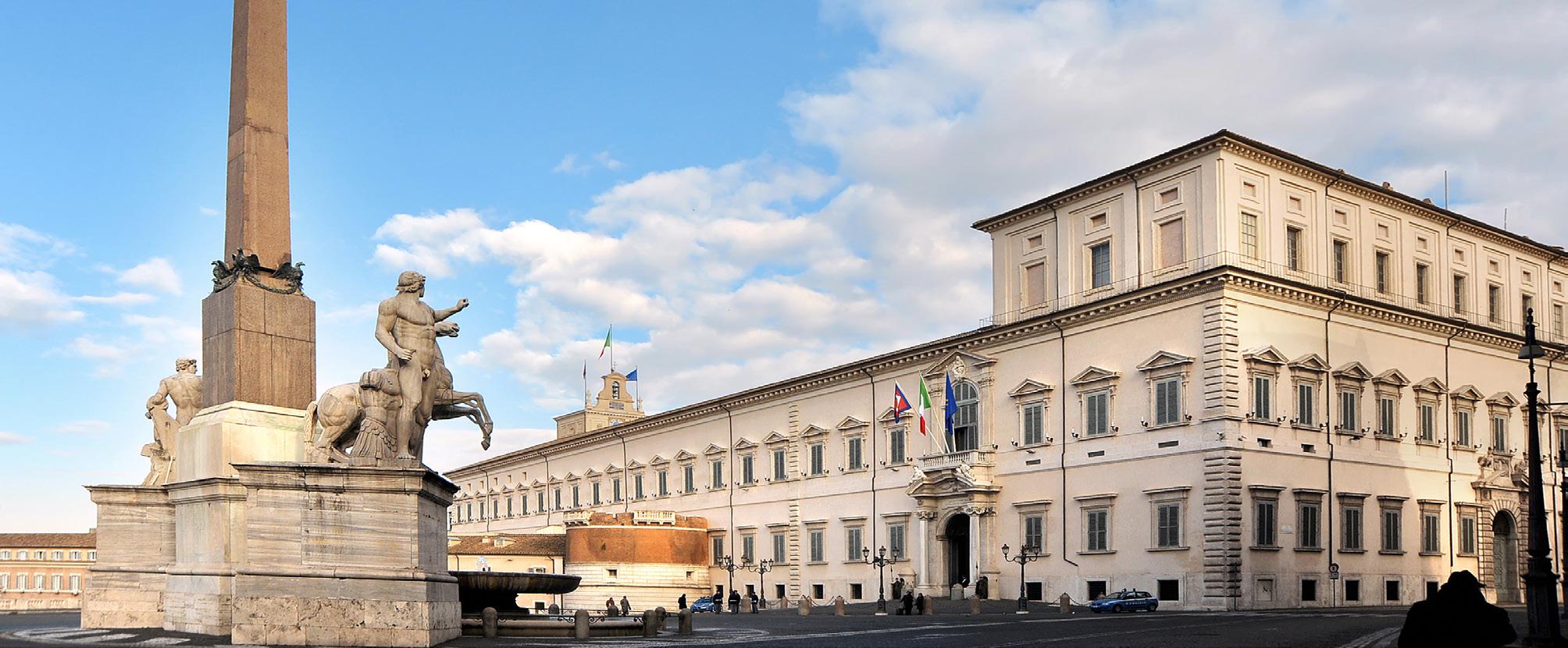 Source: Nomisma
Fonte: Nomisma forecasts (July 2022)
Source: Nomisma elaboration on Bank of Italy’s data; Nomisma’s forecasts
Source: Nomisma
Fonte: Nomisma forecasts (July 2022)
Source: Nomisma elaboration on Bank of Italy’s data; Nomisma’s forecasts
36 Market Report • Milano & Roma H1 2022
Prime Housing Market in Milan
1 371 498 +36% 6.7K - 11.2K €/sqm 250 - 360 € sqm/Y 21,000 €/sqm
Home sales (Q1 2022 on Q1 2021) Renovated Av. prime price H1 2022 New/ Renovated properties, Av. prime rent H1 2022 New/ Renovated, Historical City Centre Av. top price H1 2022
Source:
Situation and Outlook
In 2021, the sales volume of Milan’s residential market reached a consistent 24.4% increase if compared to 2020, recovering and, indeed, overcoming 2019’s sales (+2.6%), as well as recording the best result ever since 2000. Albeit being very positive, the result is slightly inferior to that of the average of the 13 monitored cities (+28% on an annual basis), a trend that can be ascribed to the very high sales volume of 2019 in a market such as Milan’s where the economic recovery had anticipated that of the rest of the Country. This brilliant market trend was also confirmed by 2022 Q1, which shows a 36% increase in sales on an annual basis. In this context, the prime segment recorded fees that are progressively returning to pre-pandemic levels and ever-growing prices, albeit with lesser intensity than the previous semesters. The market remained extremely liquid, with average placement times of 1-2 months for new or renovated properties and of 3-4 months for nonrenovated ones. The average discount on the requested price remained very limited, equalling to 3-4% for
the most interesting properties and to 6-8% for nonrenovated assets located in non-prime areas. Meanwhile, Milan is experiencing a blooming of new developments of high building and architectural quality. This potential and ambitious comparison is responsible for increasing the demand’s fastidiousness when it comes to assessing an asset held for sale. To this, one must ass the ever-increasing sensitivity for energy efficiency, especially after the spike in energy costs of H1 that does not seem to decline -at least not in the short-term. In this context, the number of buyers looking for high-energy-class properties is increasing, despite said feature can almost only be found in the stock of new buildings. Moreover, the current difficulties related to renovating properties and ascribable to the shortage and increased prices of raw materials, as well as to the lack of available labour, are making it so that, in this moment, the demand is less interested in non-renovated properties, especially when the purchase is for investment purposes. This trend is contributing to increase the gap between the ready-to-use assets and the non-renovated ones, both as
Source: Nomisma elaboration on Italian Revenue Agency
data
Population1Jan2022
New/
Istat (Italian National Institute of Statistics), Nomisma (forecast) and Engel & Völkers (prices and rents)
Source: Nomisma Performance Index 37Market Report • Milano & Roma H1 2022
far as average prices and selling times are concerned. With regard to the most sought-after locations, the centrifugal drive previously showed by the demand decreased despite its preference for semi-central and peripheral areas during the two pandemic years, when green areas used to raise a lot of interest. With the end of the restrictions and the normalisation of daily routines, the city centre returned under the younger and single population’s attention for residential purchases, thus stimulating once again also the investors’ interest.
In 2022 H1, the rental market showed a positive trend, with an increase in the level of rents and the number of contracts, gradually recovering from the setback caused by the Covid pandemic. In a market where supply still exceeds demand (especially on buildings size up to 120sqm), properties in excellent condition are preferred, at the expense of others in less than optimal condition
that in an unsaturated market struggle to find a tenant. The long-term effects of the setback that penalised the leasing market during the pandemic years are still being reflected on the market in terms of one- and two-room apartments’ oversupply. However, the recovery in the tourism sector and, as a consequence, of the short-term leases should allow for the absorption of these kind of assets. Conversely, large, turnkey assets with high quality standards are extremely lacking in the current leasing market.
2022 H2 Outlook
Engel & Völkers’ outlook for 2022 H2 provides for -with regard to the sales market- a general stationarity if compared to the previous semester, with healthy signs of increased agreements in the Northern Area and, more
Source: Engel & Völkers 38 Market Report • Milano & Roma H1 2022
specifically, in Garibaldi-Moscova-Arena and Porta Nuova-XXV Aprile neighbourhoods. Average prices should remain stationary in all areas. Regarding the leasing market, the number of agreement and the level of fees should remain stationary in the Historical Centre’s and Western Area’s areas, while the Southern part of town and, also, the Northern one, should continue to record a growth in terms of both signed contracts and average prices. On the other hand, the expected results for the Eastern Area are more varied, given that market indexes should grow in Porta Venezia - Repubblica and Indipendenza - Cinque Giornate - XXII Marzo, whereas they should remain stationary in Città Studi.
Historic City Centre
Among all of Milan market’s areas, the Historical Centre boasts, more than any other area, a generalised stationarity in average real estates’ prices. For renovated assets, the average price range is extremely wide in each neighbourhood, with Duomo, by way of example, recording average prices ranging from € 8,500-18,500 per sqm. Top prices reach up to € 20,000-21,000 per sqm in Quadrilatero, Brera and Castello - Foro Buonaparte, while stopping at € 17,000-18,000 per sqm in San Babila and Cordusio.
The same trend can be found in the leasing market for new/renovated assets, whose fees range from € 300-400 per sqm per year, while non-renovated ones recorded a small drop (€ 170-220 per sqm per year).
Source: Engel & Völkers 39Market Report • Milano & Roma H1 2022
The Western Area
The average prices for prime assets in the Western Area grew on an half-yearly basis, thus confirming their bullish trend. Indeed, average prices for renovated assets range from € 4,200-4,500 per sqm in Gambara - Bande Nere and San Siro and amount to € 9,800 per sqm in Sempione - Arco della Pace - Chinatown and Vercelli-Washington. City Life prices are still out of range, comprised as they are between €8,800 and €15,500 per sqm. The average fees increased too for new/renovated assets, now ranging between € 230-330 per sqm per year. At the same time, non-renovated assets’ fees increase too, ranging between € 200-300 per sqm per year.

Source: Engel & Völkers 40 Market Report • Milano & Roma H1 2022
The Eastern Area
The average prices of the Eastern Area recorded a substantial stationarity on an half-yearly basis in all monitored locations, with the exception of Porta Venezia and Indipendenza- Cinque Giornate - XXII Marzo, where a bullish trend for new/renovated assets can be found.
For these assets, the sales prices range between € 4,3009,150 per sqm.

Overall, average leasing fees increased both for renovated properties (€230-310 per sqm per year) and for nonrenovated ones (€135-170 per sqm per year).
The Northern Area
The average prices for this semester showed a stationary trend in all neighbourhoods of the area as far as new and renovated properties are concerned. The Northern Area includes all those areas in which average prices differ greatly, with an average of € 4,600-7,000 per sqm in Centrale - Loreto and Isola - Gioia - Maggiolina and top average ones of up to € 19,500 per sqm in Porta Nuova
- XXV Aprile. Prices are increasing, too, in Garibaldi - Moscova - Arena areas, thus confirming the current bullish trend with maximum average prices of € 12,000 per Moreover,sqm.
leasing fees increased on an half-yearly basis, ranging between €235-425 per sqm per year for new or renovated properties and between €145-200 per sqm per year for non-renovated ones.
Source: Engel & Völkers
Source: Engel & Völkers
41
Market Report • Milano & Roma H1 2022
Source: Engel & Völkers
Southern Area
Average prices for new/renovated properties increase in all areas, ranging from €6,100 per sqm in Medaglie d’Oro-Lodi to €10,200 per sqm in Porta RomanaCrocetta-Quadronno. The same trend is recorded for new/renovated and non-renovated assets, without great
variations between them if compared to the previous Leasingsemester.fees, too, recorded a growth trend, with greater increases for new or renovated assets that range between € 250-350 per sqm per year. Lastly, a bullish trend was recorded also for those non-renovated assets that do not need renovations.
Source: Engel & Völkers
42 Market Report • Milano & Roma H1 2022
Milan - Demand’s intensity for Historical City Centre and surrounding areas in H1 2022
Milan - Level of real estate prices, H1 2022
Source: Engel & Völkers
Source: Engel & Völkers
43Market Report • Milano & Roma H1 2022
 Source:
Source:
Engel & Völkers 44 Market Report • Milano & Roma H1 2022
Focus on Milan Interview
Gabriele Borgnino
Office Manager Engel & Völkers Milano Porta Romana
Petra Mojžíšová
Licence Partner Engel & Völkers Milan
Marco Sorbara
Engel & Völkers Sales Manager Milan
Roberto Magaglio
Licence Partner Engel & Völkers Milan
Q. What does the demand trend look like in 2022 H1. New trends and requests?
A. Borgnino:
In H1, Milan’s real estate demand continued to grow, following the bullish path already undertaken in 2021 H2. As further proof of this fact, the number of sales (more than 7,500) in 2022 Q1 in Milan recorded a +36% if compared to the same quarter of the previous year. Moreover, if one were to contextualise these figures in the particular and difficult historical time in which we are currently living, these results would become even more comforting.
The centrifugal trend recorded in the previous semesters, which saw an increased interest in the areas outside of the city centre, is also declining: indeed, the centre is now working at full capacity as far as business, recreational and social activities are concerned. The centre is thus recovering its usual attractiveness and charm, becoming once again the go-to choice for Milanese citizens looking for a property to purchase after the pandemic and its aforementioned effects.
The purchase demand for homes with outdoor spaces such as terraces or gardens does persist and is only marginally satisfied by the supply. However, if in 2021 demand was willing to move away from the city centre in order to buy such assets, today the newfound everyday life is curbing the move away from the centre. The delivery of new residential buildings in the coming months will only partially satisfy the need for outdoor
Finally,space. the last semester was characterised by the
demand for ready-to-buy flats, from those client who sought to take advantage of the favourable interest rates on mortgages, the rise of which had been announced.
Q: What are the new trends for the rental market? A. Mojžíšová:
Milan’s rental market, which is normally linked to the sales market, began following a different path ever since the end of the Covid pandemic. Overall, the city has yet to recover its pre-COVID population, even though the non-resident university students’ comeback and the renewed corporate mobility have reversed the negative trend over the last six months.
Pre-COVID rents were supported by an extremely lacking supply, especially as for prime properties; now that scarcity has been quenched, however, today’s demand is focusing exclusively on prime products, thus basically driving out of the market any asset that is not perceived as “of high quality” (e.g., properties without AC). The average rents are generally recovering, albeit remaining below pre-COVID levels, with still slower leasing times; this aspect, together with the increase in properties’ price, has contributed to the strong drop in attractiveness for investors. Nevertheless, today, the increasing interest rates risk to come as a surprise for some investors.
Even on the rental market, properties of a larger average size are requested than in the pre-Covid years. Today, the most sought-after solution is the three-room apartment instead of the two-room ones. Multi-room flats are paradoxically easier to rent than two-room flats due to the extreme scarcity of properties with more than three rooms.
In general, the rental offer does not match the demand. There is more demand from foreigners in general, probably related to the return of qualified persons emigrated, and from displaced Russian and Ukrainian citizens. One of the question marks is whether the increase in condominium expenses will be absorbed by rents or will be charged to tenants.
Finally, it should be noted that the 4+4 contractual framework is increasingly out of touch with the needs
45Market Report • Milano & Roma H1 2022
of landlords and tenants, who definitely prefer shorter contracts between 12 and 24 months, easier to manage. The average duration of a 4+4 contract is in fact around 2 years.
Q: What is the role of short-term leases in Milan’s rental market?

A. Sorbara: In 2022 H1, short-term leases recovered their pivotal role in Milan’s leasing market. Following two years of foreseeable decline, the possibility to travel again, the strong need for sociality and the reopening of most business activities and events generated, starting from this spring, a new wave of demand for this asset class, which has always been perfectly capable of catering for the needs of a wide range of both Italian and foreign
Thevisitors.effect of this recovery surfaced with great intensity through a fiercer demand that had to deal with a proportionally scarce supply (as many properties were either moved to the long-term leasing market in 2020
Q2 or sold), thus generating a widespread increase in average occupancy and rates over 2022 H1. These improvements do not only involve properties located in the city centre, but also those distributed throughout the area around the second and third ring roads, which, if well connected with basic services and public transport, report significant increases in bookings and values. Also contributing to this growth is the general increase in the quality of the properties and services offered, which turn out to be valid and often preferred alternatives to the classic hotel, especially by families and young people thanks to the more generous spaces, greater flexibility and the presence of all in-house services such as the kitchen and various amenities. This increase in quality is due to a trend of professionalisation of the segment in which increasingly specialised players have the ambition of bringing the Milan market closer to that of the large European cities. The half-year was therefore positive for this sector, which is very up-to-date in its characteristics and attractive to hosts and guests who find mutual satisfaction in the flexibility of this model.
46 Market Report • Milano & Roma H1 2022
A. Magaglio:
So far, Milan’s real estate market proved to be extremely resilient to the many negative news that came in from January 2022 onwards, thus continuing on its bullish trend supported by a strong purchase demand. The war in Ukraine, the price increase in energy costs and raw materials, the inflation, the increasing interest rates, the government crisis and the ongoing election campaign still did not have any relevant impact on Milan’s prime market; nevertheless, we suppose that, from October onwards, these factors will begin to have a growing impact especially on the non-prime assets, thus polarising the market in two, very different niches: the prime market and the remaining market, two niches that diverge not so much because of their position on the city’s map, but mostly because of the quality of the asset and of the services offered within that Essentially,“neighbourhood”.webelieve that all current negative factors will begin to have an impact on the non-prime part of the market - which is closely and negatively related to the increase in interest rates and to the possibility to access credit - while the prime market (less dependent
on credit and interest rates) will continue to record better prices: hence, we foresee a decrease in minimum prices but an increase in maximum ones.
In addition, inflation and the sharp rise in condominium expenses will put some property owners in serious difficulty by supporting the offer of properties for sale in bare ownership.
In any case, the Milanese premium market remains strongly supported by the measures for the return of brains and partly also by the so-called ‘super-rich flat tax’, as well as by a chronic lack of supply of quality products - even if properties built post-Covid will be available on the market from 2023. Moreover, the pandemic, as already noted, has indeed structurally changed the demand for housing by favouring properties with more indoor and outdoor space: the resulting replacement process is still underway, albeit with less vigour than a year ago when it exploded.
In addition, Milan is increasingly attracting the attention of international investors, and the appointment with the 2026 Milan-Cortina Olympics is an irresistible magnet for any kind of investment in the city. Lastly, we would like to point out that with the return of tourists, small investments in units for short-term income have also resumed.


Q: What are the forecasts for 2022 H2 ?
47
Market Report • Milano & Roma H1 2022
Prime Housing Market in Rome
2 761 632 +6,4% 3,4K - 4,8K €/sqm 140 - 270 € sqm/Y 9,000 €/sqm
Situation and Outlook
By the end of 2021, the number of residential sales (38,841) in the Roman market grew by 31.4% if compared to 2020 and by 18% if compared to 2019. The result is in line -albeit improving- with the average of the 13 monitored cities (+28% and +11% respectively). Moreover, the result represents the maximum peak ever since 2007, thus supporting the prices’ recovery. This growing trend is also confirmed by 2022 Q1 result (9,226 sales), albeit recording a slightly less intense increase on an annual basis (+6.4%).
With regard to the prime segment, in 2022 H1 the Roman market recorded a strong demand that led to good sales performances in many areas, against overall stationary average prices and selling times if compared to the previous semester.
In the Historical Centre, the residential market was fed by both first-home demands and by investment purchases, which focused mainly in the Trastevere and Testaccio neighbourhoods (always characterised by a lively market) and in Ponte, Bordo, Parione and Monteverde Vecchio, being these especially sought-after by young couple or by investors for short-term/hospitality purposes. Indeed, the presence of foreign investors increased during the period at hand, recording an influx of French and Anglo-
Saxon buyers who chose to reinvest in the Capital. Firsthome seekers usually look for big-sized apartments with outdoor spaces and significant views. A newer trend, however, can be found in the need for spaces that can be adapted for remote-work purposes. Most of the buyers interested in the central areas focused on Prati neighbourhood in their research for either first homes or investment opportunities, this time led by Italian Thepurchasers.Northern Area, increasingly appreciated for its good accessibility and for its green areas, stood out for its robust growth in sales, pursuing the same trend of the previous two semesters. Indeed, the growing demand and the decreased supply favoured the shortening of sales timing, as well as the increase in market’s liquidity. Among the most sought-after areas, we have Trieste - Salario and Nomentano - Bologna, followed suit by Parioli and Pinciano. In Nomentano/Bologna and San Lorenzo areas, the investment purchase trend remained unchanged, despite a drop in foreign investors. The Western Area confirmed its positive sales trend, also recording stationary prices. The demand is made up of couples or of households looking for their first home or for a substitute first home in a residential area. The most sought-after size ranges between 100-150 sqm. The Monteverde Nuovo neighbourhood is still arousing
Source: Nomisma elaboration on Italian Revenue Agency data
Source: Nomisma Performance Index
Population1Jan2022 Home sales (Q1 2022 on Q1 2021) New/ Renovated, Av. prime price H1 2022 New/ Renovated, Av. prime rent H1 2022 New/ Renovated .Historical City Centre Av. top price H1 2022 Fonte: Istat, Agenzia delle Entrate e Engel & Völkers 48 Market Report • Milano & Roma H1 2022
Source: Engel & Völkers
the interest of potential buyers thanks to its favourable location and to the presence of green areas, such as, amongst others, the park of Villa Doria Pamphili. All the same time, the demand grew also in the Portuense area. The Southern Area recorded a drop in sales in some of its sub-areas (despite the overall demand holding relatively steady), a drop that may represent a tell-tale sign for a trend expected take hold on a national level. In the most central and sought-after areas such as San Giovanni and Appio Latino -favoured by the presence of the subway line-, however, contracts remained stable. EUR and Torrino Nord, on the other hand, aroused the interest of both first-home seekers and investors. The first-home or substitution demand focused mainly on non-renovated
Theassets.leasing
market, for its part, confirmed its vitality, remaining in line with the previous semester, due to the pressure of the demand interested mainly in new, modern and renovated assets. The residential supply, on the other hand, recorded a significant drop due to the renewed interest in assets for hospitality purposes following the
recovery of the tourism sector, which had been penalised by the pandemic. With regard to the various area of the city, the greatest growth (if compared to 2021) was recorded in the Historical Centre, despite the most sought-after area is the Northern one due to the presence of diplomats, academics and professionals, followed by the Southern one, where lessees look for big-sized apartments next to green areas and far from the chaos of the centre.
2022 H2 Outlook
Regarding 2022 H2, Engel & Völkers’ forecast provides for an overall stationary trend for sales, especially in the Historical Centre and Prati - Vatican areas. A more bullish trend may be found in the Western area, but only with regard to Monteverde Nuovo and Gianicolense. On the other hand, in the Southern Area, a drop is expected in the Ardeatino - Montagnola and San Giovanni - Appio Latino areas. Average prices should remain stationary in all Conversely,areas. the leasing market should present a more varied scenario, with some growing area and some stationary ones. More specifically, an increase in leases is expected in the Historical Centre and, in the Northern Zone, in Trieste - Salario, Talenti - Monte Sacro, Nomentano - Città Giardino and Balduina. The areas of Monteverde Nuovo and Gianicolense, to the West, and of EUR, Torrino and San Giovanni - Appio Latino, to the South, should also end up recording good performances. No change is expected for leasing fees.
*Different trends have been registered in sub-areas
Fonte: Engel & Völkers
49Market Report • Milano & Roma H1 2022
Historical Centre and Prati-Vatican area
In the Historical Centre, average prices proved to have a very wide range that takes into account the location of the asset, its maintenance status and its proximity to historical-cultural or institutional POIs. As far renovated properties, prices range between € 3,000-9,000 per sqm in the most exclusive neighbourhoods, in line with the previous semester.
The discounts on final prices recorded a stationary trend on a half-yearly basis, remaining stably at 7-9%, depending on the status and the features of the asset.
Moreover, the average placement times dropped slightly, reaching 6-8 months.
In the Prati - Vatican area, the average prices range varies substantially, going from €4,200 to €7,000, for new/ renovated assets. Average selling times extended to 6 months, with average discounts ranging from 4-12%. Furthermore, the fees for renovated assets grew both in the Historical Centre (€ 170-380 per sqm per year) and in the Prati - Vatican area (€ 185-200 per sqm per year). Average leasing times are of about 3-4 months in both locations.
Source: Völkers
Source: Engel & Völkers
Engel &
50 Market Report • Milano & Roma H1 2022
Source: Engel & Völkers
Rome: Historical City Centre and Prati-Vatican Level of Real Estate Prices, H1 2022
51Market Report • Milano & Roma H1 2022
The Northern Area
Average prices varied differently in the various neighbourhoods of the area, with average values ranging from €3,000-7,000 per sqm. Parioli and Trieste - Salario areas recorded the highest prime prices, with an average of €7,000 and €6,100 per sqm respectively for new or renovated assets. In 2022 H1 the average discount on the final price dropped too, showing a great variability
depending on the area (between 3-12%). The average selling times remained virtually unvaried, ranging between 2-8 months.
The range of average fees increased, too, reflecting a growth over the previous half-year for new and renovated assets (€110-300 per sqm per year). Average leasing times range between 3-5 months in most neighbourhoods, albeit they drop below 2 months in Talenti - Monte Sacro.
Source: Engel & Völkers
52 Market Report • Milano & Roma H1 2022
Rome - Level of real estate prices, H1 2022
 Source: Engel & Völkers
Source: Engel & Völkers
53Market Report • Milano & Roma H1 2022
The Western Area
Average prices varied differently in the various neighbourhoods of the area, with average values ranging from €3,000-7,000 per sqm. Parioli and Trieste - Salario areas recorded the highest prime prices, with an average of €7,000 and €6,100 per sqm respectively for new or renovated assets. In 2022 H1 the average discount on the final price dropped too, showing a great variability
depending on the area (between 3-12%). The average selling times remained virtually unvaried, ranging between 2-8 months.
The range of average fees increased, too, reflecting a growth over the previous half-year for new and renovated assets (€110-300 per sqm per year). Average leasing times range between 3-5 months in most neighbourhoods, albeit they drop below 2 months in Talenti - Monte Sacro.
 Source: Engel & Völkers
Source: Engel & Völkers
54 Market Report • Milano & Roma H1 2022
The Southern Area
Average prices for new/renovated-to-new housing are on the whole stable compared to the previous half year, with the exception of the EUR and Laurentino zones where an increase in maximum average prices is registered. Average prices range from 2,300 euros/sqm in the Laurentino area to 4,800 euros/sqm in San Giovanni/ Appio Latino and EUR ones for new or renovated-to-

new properties. The average discount on the asking price ranges between 3%-15%. Average selling times amount to about 7 months, even though in San Giovanni/Appio Latino and Ardeatino/Montagnola areas they drop to about 4-5 months.
Average maximum rents are falling, with values of new or renovated properties ranging from 115-260 euros/sqm/ year. Average time to lease is very liquid, ranging from 2 to 3 months.
Source: Engel & Völkers 55Market Report • Milano & Roma H1 2022
 Source: Engel & Völkers
Source: Engel & Völkers
56 Market Report • Milano & Roma H1 2022
Focus on Rome Interview
Helio Cordeiro Teixeira Managing Director M.C. Rome Engel & Völkers
Rome’s real estate market, especially the residential one, proved to be extremely lively in 2022 H1, continuing the growing trend that had begun in 2019.
After two years of permanent public health emergency and despite the current complicated world scenario, the perception is that of an expansionary trend in both the leasing and purchasing markets, which are characterised by wait-and-see attitudes upon the occurrence of a negative situation followed by quick recoveries. As of 30 June 2022, our figures show a +16% increase in transactions if compared to 2021 H1, thus confirming this trend also in a period full of changes and uncertainties on a global scale.
The demand recorded constant and sustained growth levels over the last six months, while the interest in the residential segment did not show any signs of collapse, especially with regard to first home substitution, which is still the number one priority for most clients. Moreover, small and medium-sized real estate investments in the central areas took place thanks to the gradual return to normality and to the recovery of tourism in the city, with attractive prospects of a total return to normality. If, on the one hand, the demand was vigorous, on the other hand, the supply was not, suffering as it did the consequences of the overall uncertain context in which we now live in. Indeed, the continuing war in Ukraine, the governmental-political crisis and the risk of a Fall characterised by an inflationary growth contribute to hinder a clear interpretation of the future by homeowners who, uncertain on whether to make important decisions or not, are slowing down their selling plans, thus generating a scarcity of new products on the market. The buoyancy of demand and the weakness of supply, in a complex local and global picture, have inevitably had an impact on prices. Perhaps we cannot say that there has been a real increase in prices across the board and in all areas, but there has certainly been a narrowing
of the gap between asking and closing prices (reducing the margins of negotiability) for quality properties, located in wellserviced areas and equipped with the now fundamental requirements such as: good overall condition, agile mobility, outdoor spaces and energy efficiency solutions. Another important indicator that emerged in the first half of 2022 concerns sales times, now stabilised on average between 5 and 6 months, which are significantly reduced for properties sold at the right price and characterised by the presence of the main Therequirements.rentalmarket
broadly follows the same growing trend of the demand as in the sales sector in H1 2022. Here, too, the supply is struggling to meet the needs of users quantitatively and qualitatively. Central and semicentral areas well served by transport and basic services, outdoor spaces, technical equipment and the overall good condition of the property are fundamental requirements for an attentive client, with a need for flexibility and often in constant mobility. The rental sector has undoubtedly benefited from the slowdown in health pressure, the increasing return of business travel, the gradual recovery of the tourism sector and, in many cases, the difficulties of many clients in buying their first home.
Q: As far as Rome’s areas are concerned, did you record new trends?
In Rome, despite its many distinguishing elements of attractiveness, the various investment and redevelopment plans necessary to change the shape of the city and, as a consequence, its housing map (which is still focused on its historical neighbourhoods rather than on its emerging areas) were not completed. Indeed, the Capital’s project are still suffering from over-bureaucracy, slow implementation times and unresolved problems that piled up over the years from public administration to public administration. If, on the one hand, this situation represent a problem for the evolution and modernisation of the city, on the other hand it hides a great opportunity for the future, given the forthcoming investment potential of many peripheral areas.
As a matter of fact, the completion of mobility plans and new infrastructures, as well as the improvement of the
Q: What does the leasing and purchasing demand’s trend look like in 2022 H1?
57Market Report • Milano & Roma H1 2022
quality of urban services and cleanliness, are all factors that may change radically the current housing map, creating a more homogeneous and attractive market throughout the various areas of the city.
The renovation of buildings with great historical and architectural value in the central area and the redevelopment of large and abandoned areas in semi-central and peripheral areas may contribute to increasing housing opportunities, offering cheaper prices and giving more choices to those potential buyers who cannot afford to buy a first home in the most consolidated neighbourhoods (i.e. singles, young couples or small Thehouseholds).characteristics
that make Rome a unique city remain undisputed: the beauty of the city, its historical and artistic heritage, the presence of many green areas, the international reputation, the events, hte favourable climate and proximity to the sea do continue to attract Italian and foreign buyers, especially towards historical, central and semi-central districts.

The need for more space, indoors and outdoors, the presence of green areas and essential services, and good mobility are decisive elements in the choice of a new property. For both purchase and rental market, high-end clients and business clients are mainly interested towards prestigious areas such as Centro Storico, Parioli, Prati, while middle class single and households prefer residential districts such as San Giovanni, Monte SacroTalenti, Balduina, Monte Verde, Gianicolense, Ostiense, Eur, Palocco, etc.
Q: What are the forecasts for 2022 H2?
n spite of the many current variables in the national and international scenario, the overall vitality of the residential market is an hopeful sign for a still expansionary second semester. The quality and quantity of the demand, the growing willingness to improve one’s housing condition and the fear of a sudden increase in housing prices and interest rates are indeed strengthening the interest and the need for substitution. On the other hand, the lack of new products capable of satisfying a growing demand may create some slowdowns, and the sector must take this into account and ready itself.
Moreover, one should not forget about the many factors that may have a negative impact on the real estate sector (and on other sectors of the Italian economy, too), such as the escalation of the war in Ukraine, the uncontrolled increase in inflation and interest rates, the difficulties in accessing credit lines, the energy crisis and the overall slowdown in the Italian and global economies.
These are issues that Engel & Völkers addresses with timely corrective actions and a clear medium- and long-term strategy, which includes the continuous reinforcement of the value of the internationality of the brand, the ever higher quality of services, the capacity for investment in marketing technology and digitalisation, the national and international cross-selling, and a major expansion plan for the Market Centre model in Italy and worldwide, in parallel with what has always been done in the franchising network.
Market Report • Milano & Roma H1 202258
Milan and Rome markets at a glance
In spite of the economic criticalities characterising the current global situation, the prime market of the two main Italian cities is showing favourable conditions, with a leasing segment that is recovering pre-pandemic levels and a purchasing one that is still growing, albeit with less intensity than the two previous semesters. With regard to Milan, the prime demand is contributing to confirm the extremely quick absorption times and the meagre discounts. The emotional drive to purchase assets outside of the city centre is fading and the historical areas are once again the protagonists of both leasing and investment choices. The intensity of the urban development is raising the bar of the demand’s requirements, restoring a difficult benchmark to be found in a wide and mostly inadequate supply. This trend is leading prime or renovated assets’ leasing and purchase prices outside of the normal market. Average prices are stationary in the historical centre and in the Northern area, while all other areas are benefiting from a price increase.
In Rome, sales and leasing contracts are growing especially in all prime areas and in those neighbourhood that present a good value for money and that are well connected to the city centre. However, a slight drop in transactions can be recorded in some areas of the Capital, a foreboding sign in line with the transactions’ downturn forecasts of the operators on the national market. The
interest in the Historical Centre is completely restored, also with regard to the foreign demand. Prices and fees are stationary overall, with more liquid placement times if compared to the recent past. 2022 H2 outlook highlights, for both cities, an ambiguous market performance depending on each specific area.

In Milan, the sales market is expected to remain stationary overall, with a possible increase in contracts in some neighbourhoods of the Northern area. Average prices should remain unchanged in all areas. With regard to the leasing market, the number of contracts and fees should remain stationary in both the Historical Centre and the Western area, while a part of the Southern one and the whole Northern area should continue with their growing trend. The Eastern area, on the other hand, should present a more multi-faceted performance with growing contracts and fees in some neighbourhoods
Inonly.Rome, the leasing market seems to be growing inconsistently, with some neighbourhoods recording an increase in contracts (albeit with unchanged fees), while other should remain stationary. Sales and prices should remain stable in the Historical Centre, in PratiVaticano and in the Northern areas, while the Western and Southern parts of town will record an increase and a drop in contracts, respectively, in some of their areas.
Market Report • Milano & Roma H1 2022 59
Imprint
Editorial Office
Engel & Völkers Italia S.r.l. via Dante, 16 I-20121 Milano (MI)
Phone: +39 02-584 99 61
Officeswww.engelvoelkers.it
Engel & Völkers Milano
M&M Real Estate S.p.A., Licence Partner di Engel & Völkers Italia S.r.l. via Broletto angolo via dei Bossi, 7 • 20121 Milano via Buonarroti, 21 • 20149 Milano corso di Porta Romana, 123 • 20122 Milano via Eustachi, 19 • 20129 Milano via Giacomo Boni, 25 • 20144 Milano
Phone: +39 02-944 333 www.engelvoelkers.com/milano31
Engel & Völkers MMC Roma EV MMC Italia S.r.l. corso Vittorio Emanuele II, 282-284 • 00186 Roma Phone: +39 06-455 481
Thewww.engelvoelkers.com/roma20MarketReport•Milan&Rome
H1 2022 edited by Engel & Völkers has been realized with the collaboration and scientific support of Nomisma.
Project Manager: Chiara Gasparetti
Graphics: Andrea Dalprato
Image Sources: Adobe Stock
Printed: Septembre 2022
Reproduction of content is prior permission of the publishers. No liability is accepted for editorial content, accuracy of text or misprints. No liability is accepted for errors in details.
www.engelvoelkers.it
